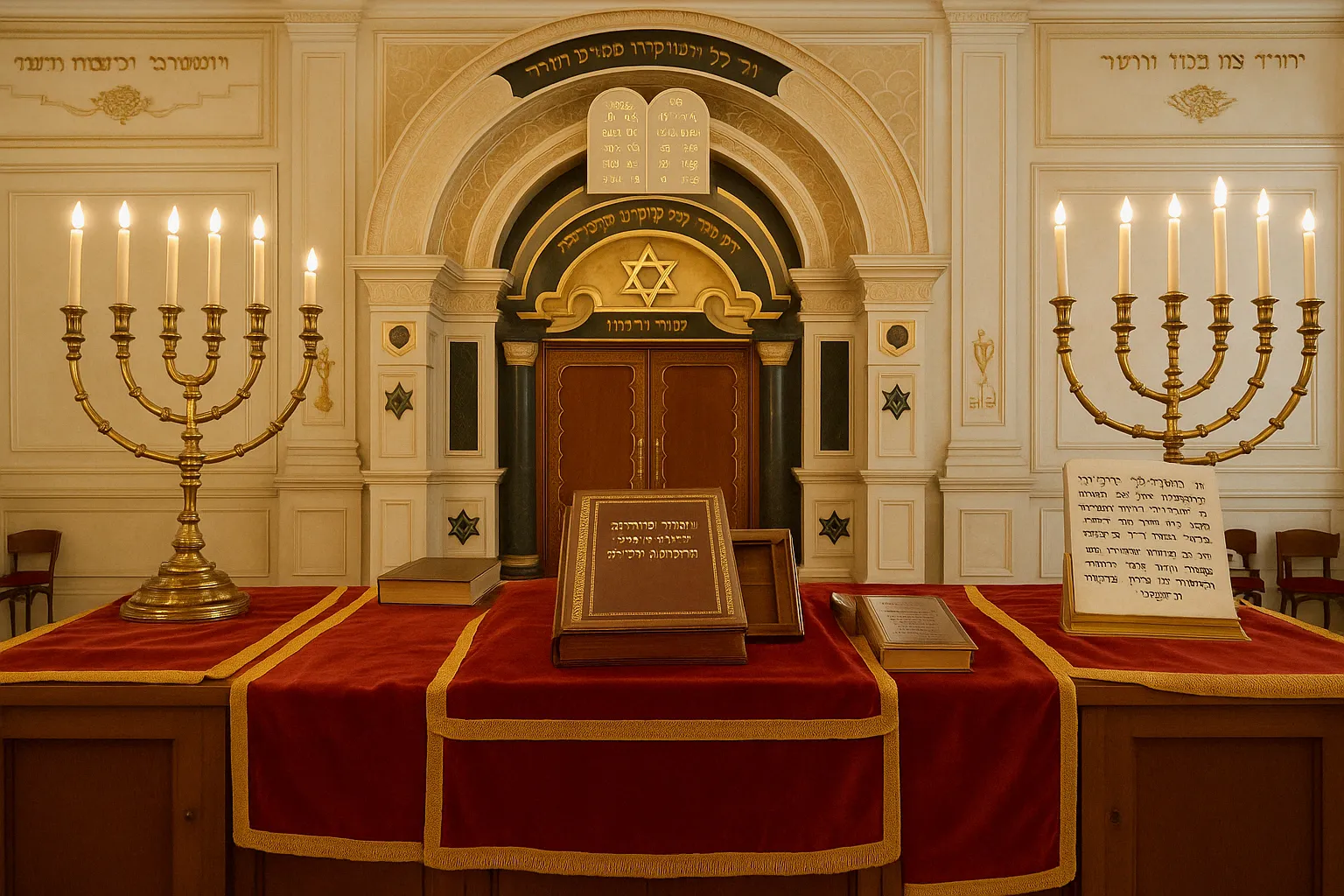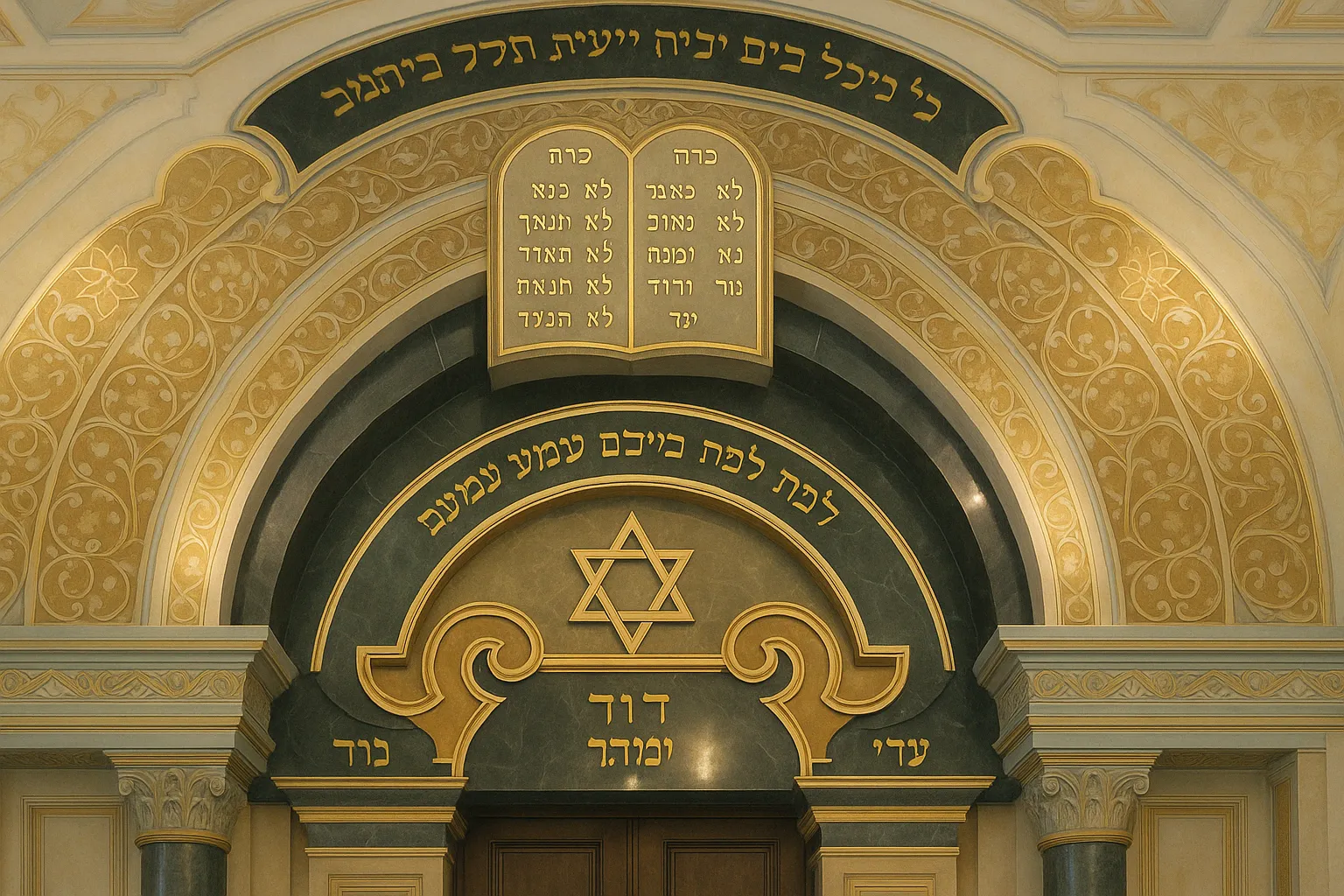
El Mellah of Casablanca: Discovering Morocco’s Hidden Jewish Heritage
A Cultural Treasure in the Heart of Morocco’s Economic Capital
The afternoon sun casts long shadows across ancient doorways marked with subtle Stars of David, while the distant call to prayer mingles with memories of Hebrew melodies that once filled these narrow streets. Standing at the threshold of El Mellah of Casablanca Morocco, you’re about to step into a world where cultures have interwoven for centuries, creating a tapestry of history unlike anywhere else in North Africa.
El Mellah of Casablanca Morocco is the historic Jewish Quarter nestled within the old medina, showcasing centuries of Moroccan Jewish heritage through its distinctive architecture, sacred spaces, and cultural significance. This often-overlooked treasure offers a profound glimpse into Morocco’s multicultural identity and stands as a testament to the country’s legacy of religious diversity. As your trusted guide to authentic Moroccan experiences, Morocco Travel 4×4 invites you to discover this extraordinary district through our exclusive cultural exploration.
In this comprehensive guide, we’ll journey through the fascinating history of Casablanca’s Jewish Quarter, explore its most significant landmarks, reveal cultural insights rarely shared with tourists, and provide expert tips for making your visit truly meaningful—all while connecting this unique experience to the broader mosaic of your personalized Moroccan adventure.
What & Where: Understanding El Mellah of Casablanca
The term “Mellah”—derived from the Arabic word for “salt”—refers to traditional Jewish quarters established throughout Morocco. While some believe the name originated from the salt marshes where Fez’s first Jewish quarter was built, others suggest it commemorates the Jewish community’s historical role in salt trading and preservation industries.
Casablanca’s Mellah is uniquely positioned within the northeastern section of the old medina (walled city), approximately 3 kilometers from the iconic Hassan II Mosque. Unlike the ancient Mellahs of imperial cities such as Fez (established 1438) and Marrakech (established 1558), Casablanca’s Jewish Quarter developed more recently in the late 19th century, reflecting the city’s emergence as a commercial powerhouse during the French Protectorate era.
This distinction gives Casablanca’s Jewish Quarter a different architectural character—one that blends traditional Moroccan elements with European influences that were becoming prominent during its development. When our Morocco Travel 4×4 guides lead you through these storied streets, they’ll point out these subtle design elements that tell the story of a community in transition between traditional and modern worlds.
The Rich History of Casablanca’s Jewish Quarter
Origins and Early Development
Jewish presence in the Casablanca region stretches back many centuries, with evidence of Jewish merchants trading along the Atlantic coast since medieval times. However, historical research by renowned scholars like Dr. Susan Gilson Miller indicates that Casablanca’s formal Mellah was established around 1865 during Sultan Mohammed IV’s reign, considerably later than its counterparts in Morocco’s imperial cities.
Moshe Bensimon, a cultural historian specializing in North African Jewish communities, explains: “Casablanca’s Mellah evolved organically alongside the growing port city, rather than being established by royal decree as an enclosed quarter. This gave it a more integrated character from its earliest days.”

The Golden Era (1912-1956)
The French Protectorate period transformed both Casablanca and its Jewish community dramatically. As the city evolved into Morocco’s economic center, its Jewish population swelled from approximately 3,000 in 1900 to over 70,000 by the 1950s, making it one of the largest Jewish communities in the Arab world.
During this golden era, the Mellah buzzed with activity:
- Jewish-owned businesses ranging from artisanal workshops to international trading companies flourished
- Educational institutions like the Alliance Israélite Universelle schools brought modern European education alongside traditional religious studies
- Cultural life thrived with theaters, literary societies, and political organizations
- Jewish professionals including doctors, lawyers, and engineers became prominent figures in Casablanca’s development
Interestingly, this period also witnessed the beginning of a demographic shift as wealthier Jewish families began relocating from the Mellah to newly developed European-style neighborhoods like Roches Noires and Anfa, while the Mellah remained home to working-class families and recent migrants from rural areas.
Post-Independence Transformation
Following Moroccan independence in 1956 and the establishment of Israel, Casablanca’s Jewish community experienced significant emigration. Despite this exodus, the city maintained the largest remaining Jewish population in any Arab country. While most community members no longer resided within the Mellah itself, they maintained deep connections to its synagogues and institutions.
Today’s Mellah stands as both a historical monument and a living heritage site, with a small but active Jewish community still maintaining its traditions in Casablanca. When our Morocco Travel 4×4 guides take you through these streets, they bring these historical layers to life through personal stories and hidden details that standard tours often miss.
Essential Sites to Explore in Casablanca’s Jewish Quarter
Beth-El Synagogue: The Crown Jewel
No exploration of El Mellah of Casablanca Morocco would be complete without visiting Beth-El Synagogue, widely regarded as one of the most beautiful synagogues in North Africa. Built in 1949 during the community’s peak prosperity, this architectural masterpiece represents the perfect synthesis of Jewish tradition and Moroccan craftsmanship.
What makes Beth-El truly exceptional:
- Stunning stained glass windows depicting biblical scenes and traditional Jewish symbols, bathing the interior in kaleidoscopic light during morning prayers
- Intricate Moroccan zellij (mosaic tilework) incorporating Jewish motifs alongside traditional geometric patterns
- Handcrafted woodwork in the women’s gallery and around the Torah ark, showcasing the finest Moroccan cedar carved by master artisans
- Active status as a functioning synagogue where services are still held, especially for important holidays
Our Morocco Travel 4×4 experiences can arrange private access to Beth-El with knowledgeable Jewish community members who share intimate insights about the building’s significance and the rituals still performed within its walls.
Em Habanim Synagogue
This historic synagogue has served the community since the early 20th century and continues as an active place of worship. Less ornate than Beth-El but deeply authentic, Em Habanim offers visitors a glimpse into day-to-day Jewish religious life in Morocco. Its modest exterior conceals an interior rich with history—prayer books dating back generations, traditional seating arrangements, and ritual objects that have witnessed decades of community celebrations and commemorations.
Through our connections with the local Jewish community, Morocco Travel 4×4 can sometimes arrange visits coinciding with religious services (with appropriate respect for the congregation), offering a rare opportunity to experience living tradition rather than merely observing historic architecture.

The Jewish Cemetery
Just beyond the Mellah’s main streets lies the Jewish cemetery, a peaceful haven of remembrance amid the urban bustle. The cemetery contains graves dating back over a century, with distinctive white tombstones featuring Hebrew inscriptions alongside decorative elements that reflect Moroccan-Jewish artistic traditions.
Notable features include:
- Family mausoleums of prominent community leaders and rabbis
- Distinctive burial customs blending Sephardic Jewish traditions with Moroccan influences
- Memorial sections commemorating community members who perished during World War II
- Caretakers who maintain centuries-old burial traditions and sometimes share oral histories with respectful visitors
Our guides approach this sacred site with appropriate reverence, explaining Jewish memorial customs while allowing for quiet reflection in this peaceful corner of the city.
Museum of Moroccan Judaism
Though located outside the Mellah proper (in the Oasis neighborhood), the Museum of Moroccan Judaism is an essential complement to understanding the full context of Jewish life in Casablanca. As the only Jewish museum in the Arab world, it houses an extraordinary collection that brings to life the rich cultural heritage of Moroccan Jewry.
The museum’s highlights include:
- Reconstructed synagogue interiors showing different regional styles from across Morocco
- Comprehensive collection of ceremonial objects including Torah scrolls, Hanukkah menorahs, and wedding artifacts
- Traditional clothing, jewelry, and domestic items illustrating daily life
- Photographic archives documenting community celebrations, religious occasions, and everyday moments throughout the 20th century
- Documents highlighting Jewish contributions to Moroccan commerce, culture, and international relations
Morocco Travel 4×4 can arrange private guided tours of the museum with curators who provide deeper context about specific exhibits of interest to our clients.
Cultural Insights: Life in the Mellah Then and Now
Traditional Community Life
The Mellah once functioned as a complete microworld, with daily life revolving around both religious observance and active participation in Casablanca’s broader economic and social spheres. Jewish residents maintained distinctive traditions while engaging dynamically with their Muslim neighbors.
Traditional occupations associated with the Jewish community included:
- Jewelry making and precious metalwork, with distinctive Moroccan-Jewish design traditions
- Tailoring and textile trades, including specialized ceremonial garments
- International commerce, with many families maintaining trade connections across Europe and the Mediterranean
- Food preparation, particularly kosher butchery and specialized Moroccan-Jewish cuisine
Rachel Corcos, an 83-year-old former Mellah resident who now divides her time between Casablanca and Montreal, shared with our team: “The Mellah wasn’t just buildings—it was a way of life. On Fridays before sunset, everyone would rush to finish their preparations. The smells of fresh bread and fish simmering with chermoula would fill every home. Neighbors shared everything—cooking ingredients, celebrations, even sorrows. We lived modestly, but there was such richness in our community bonds.”
Present-Day Jewish Casablanca
Today, approximately 2,000 Jews remain in Casablanca—the largest Jewish community in the Arab world. While few still reside within the historic Mellah, community life continues around the remaining synagogues, community center, and several kosher establishments in newer neighborhoods.
Under the leadership of the Communauté Israélite de Casablanca, important holidays and lifecycle events continue to be celebrated according to distinctive Moroccan-Jewish traditions. The community maintains strong connections to its heritage while fully participating in contemporary Moroccan society.
During certain times of year, Morocco Travel 4×4 can arrange special cultural experiences including:
- Attendance at community celebrations during festivals like Mimouna (the post-Passover celebration unique to Moroccan Jews)
- Culinary experiences featuring traditional Moroccan-Jewish recipes
- Meetings with community members who share personal perspectives on Moroccan-Jewish identity today
Culinary Heritage Worth Savoring
The unique fusion of Jewish dietary laws with Moroccan flavors created a distinctive culinary tradition that remains a point of pride for the community. Through our connections with local culinary experts, we can introduce you to signature dishes including:
- Dafina (Skhina): A slow-cooked Sabbath stew that simmers overnight, incorporating chickpeas, potatoes, meat, and eggs with a unique spice blend including cumin, paprika, and cinnamon
- Tfaya: Caramelized onions and raisins spiced with cinnamon and honey, traditionally served with couscous for celebrations
- Moroccan-style preserved lemons and olives prepared according to kosher methods
- Special pastries prepared for holidays, such as Purim’s “Oznei Haman” with distinctive Moroccan fillings including dates, almonds, and honey
For culinary enthusiasts, we offer specialized food tours that include tastings of these traditional foods alongside the stories of their cultural significance.
Expert Tips for Visiting El Mellah of Casablanca Morocco
When to Visit
For the most rewarding experience exploring Casablanca’s Jewish Quarter:
- Morning hours (9-11 AM) offer the best combination of comfortable temperatures and good natural light for photography
- Weekday visits provide better opportunities to observe daily life and enter synagogues (which are typically closed or in active use on Saturdays for Sabbath)
- Spring (April-May) and fall (September-October) offer ideal weather conditions
- Consider timing your visit around Jewish holidays for special cultural insights—but note that sites may be closed during major holidays
Transportation and Access
The Mellah is accessible through several convenient options:
- Our Morocco Travel 4×4 private vehicles provide direct access with knowledgeable drivers familiar with navigating the medina’s narrow entrance points
- For independent travelers, petit taxis charge approximately 20-30 dirhams from downtown areas—specify “El Mellah” or “Jewish Quarter, Old Medina”
- Walking is possible from other medina locations—enter through Bab Marrakech and follow signs toward the northeast section
Cultural Etiquette
When visiting religious sites within the Mellah:
- Dress modestly as a sign of respect—shoulders and knees should be covered regardless of gender
- Men should wear a head covering when entering synagogues (kippahs are often provided at active synagogues)
- Photography is generally permitted in exterior spaces but always ask permission before photographing people or religious ceremonies
- Small donations for maintenance are appreciated when visiting religious sites and help support preservation efforts
Guided Exploration vs. Independent Discovery
While self-guided exploration is possible, the rich history of the Mellah is best appreciated with knowledgeable guidance:
- Morocco Travel 4×4’s specialized cultural guides provide historical context that brings the quarter’s empty spaces to life
- Our relationships with community members allow access to synagogues that might otherwise be closed to casual visitors
- Security considerations are seamlessly managed with our professional guides
For those preferring independent exploration, we recommend:
- Downloading an offline map application before your visit
- Using major landmarks like Beth-El Synagogue as orientation points
- Allowing 2-3 hours for a thorough exploration at a leisurely pace
Incorporating the Mellah Into Your Broader Morocco Journey
El Mellah of Casablanca Morocco serves as a fascinating complement to other significant Jewish heritage sites throughout the country, including:
- The restored Mellah of Fez with its 17th-century synagogues and Jewish cemetery
- Essaouira’s historic Jewish quarter and the Haim Pinto Synagogue
- The Mellah of Marrakech with its distinctive architecture and restored synagogue
Beyond the Mellah: Extending Your Casablanca Experience
After exploring El Mellah of Casablanca Morocco, complement your understanding of the city’s multicultural heritage with visits to:
- The magnificent Hassan II Mosque, showcasing the height of Moroccan Islamic architecture and craftsmanship
- The Art Deco district, reflecting French colonial influence during the same period the Jewish community was flourishing
- The Villa des Arts, housing contemporary Moroccan artwork that often engages with themes of cultural identity and heritage
- Mohammed V Square, named after the king who protected Morocco’s Jewish citizens during World War II
Our expert guides provide seamless transitions between these cultural experiences, weaving a comprehensive narrative that enhances your understanding of Casablanca’s complex identity.
Preserving Heritage: Responsible Tourism in El Mellah
At Morocco Travel 4×4, we believe in sustainable tourism that benefits local communities and preserves cultural heritage. When visiting El Mellah of Casablanca Morocco with us, you’re contributing to:
- Economic support for remaining Jewish community institutions through appropriate donations and patronage
- Documentation and celebration of living traditions that might otherwise be lost to time
- Cross-cultural understanding that honors Morocco’s legacy of religious diversity
- Local artisans and businesses that maintain traditional crafts associated with the community
We partner with community preservation initiatives and can arrange special experiences that directly support heritage conservation efforts according to your interests.
Experience El Mellah of Casablanca with Morocco Travel 4×4
Our exclusive guided explorations of Casablanca’s Jewish Quarter go beyond standard tourist routes to offer:
- Expert cultural guides with specific knowledge of Moroccan-Jewish history and traditions
- Access to sites often closed to independent travelers through our community connections
- Contextual understanding that connects the Mellah to your broader Moroccan journey
- Personalized experiences based on your specific interests, whether architectural, historical, religious, or culinary
- Seamless integration with luxury accommodations and transportation throughout your Moroccan adventure
El Mellah of Casablanca Morocco represents just one facet of Morocco’s extraordinarily diverse cultural heritage. Whether incorporated into a comprehensive exploration of Jewish Morocco or as a fascinating addition to your Casablanca experience, this historic quarter offers profound insights into the country’s multicultural identity.
Contact our expert travel planners today to incorporate this unique cultural treasure into your personalized Moroccan journey. Whether you’re seeking a deep dive into Morocco’s Jewish heritage or looking to add authentic cultural dimensions to your luxury adventure, Morocco Travel 4×4 will craft an experience that exceeds expectations.
Have you explored El Mellah of Casablanca or other Moroccan Jewish heritage sites? Share your experiences in the comments below. For more guidance on creating your perfect Moroccan journey or to book a specialized tour of Jewish heritage sites throughout the country.



